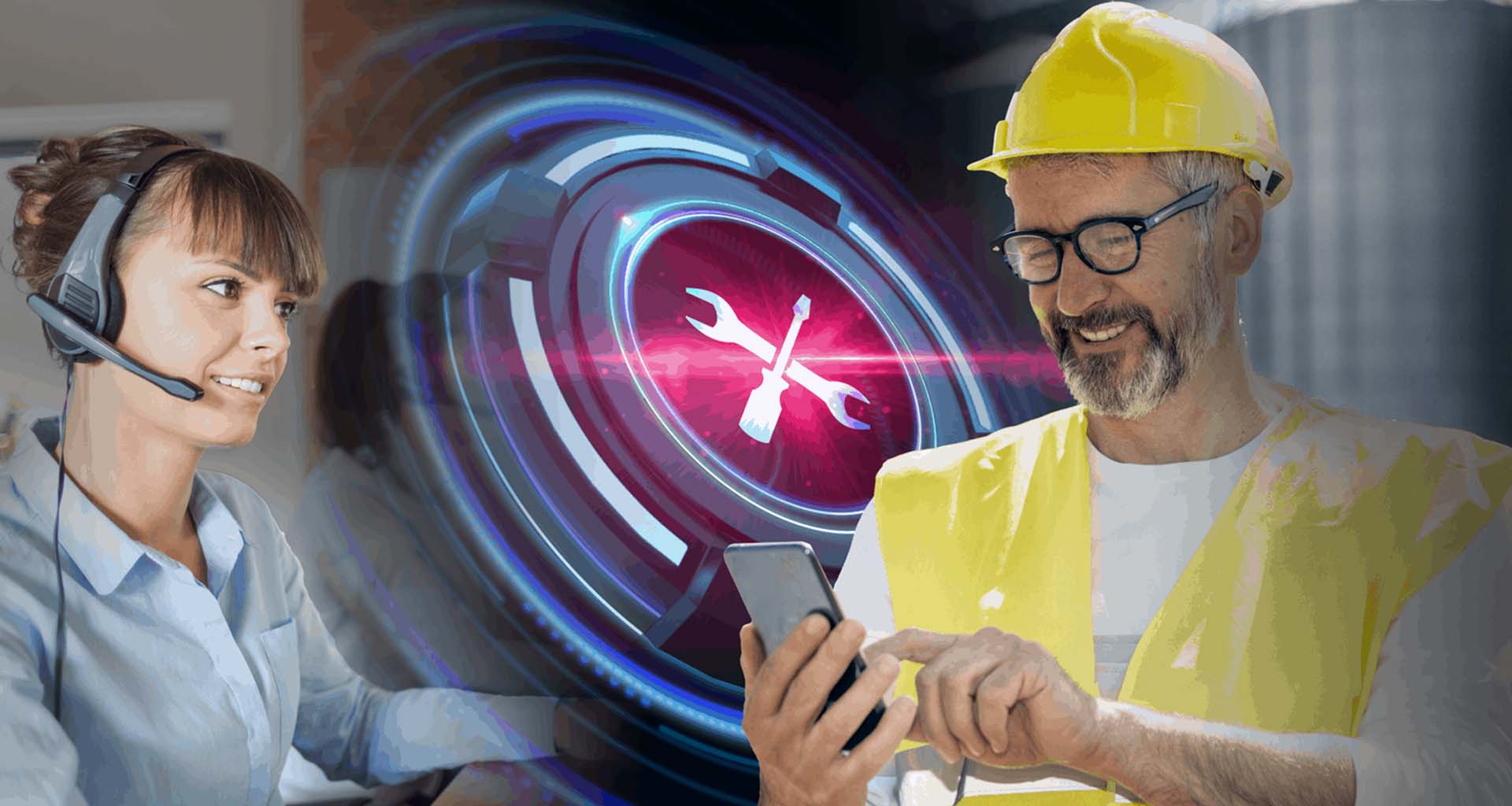Contents
There’s a new trend in customer service: the borders between technicians and agents are becoming blurred, with each one taking on aspects of the others’ traditional roles. Technicians normally found in the field are now stationed in a back office or working from home, guiding customers remotely as a traditional agent. Likewise, agents are now empowered to go above and beyond their standard scripts, using their newfound technical knowledge and skills to assist their customers. Triage sessions between agents, technicians, and customers have become the norm. This shift is here to stay… thanks to remote visual assistance.
The Impact of Visual Assistance in Customer Service Roles
Remote visual assistance allows users to instantly stream their mobile device camera or screen via web connection for real-time, interactive visual engagement. This technology has a powerful impact on the way contact center agents and field service technicians perform their roles.
Visual assistance in contact centers bridges the visual gap between customers and contact centers. Remote agents can see what their customers see through their smartphone cameras, and visually guide them to resolutions. Instead of customer support agents attempting to explain with words how customers can fix their issues, they can visually show them via step-by-step actions and movements.
Visual assistance in field services allows technicians to guide the customer from a remote location, transmit video and images of technical issues from the field while consulting with a remote expert, or handle the issue themselves in autonomous assistance mode while onsite.
How Remote Visual Assistance Supports Expansion of the Roles of Customer Service Agents
Visual assistance allows the agent to see what the customer sees, just as a technician would if he were on site – it is like a virtual tech visit. For the first time, agents can go the extra mile and resolve issues that previously could only be resolved by dispatched technicians. This provides the agents with a greater sense of autonomy and higher success rates, but also requires them to have more advanced technical skills and the flexibility to think beyond the standard scripts when assisting customers.
For example, suppose a customer needs help with a printer that has stopped functioning. Traditionally, a customer service agent would run through a specific script asking the customer to power off/on, read specific error messages, or check for paper jams. If these basic steps did not resolve the problem, a technician would be dispatched.
With visual assistance, the roles of customer service agents change. The agent is now empowered to provide much more advanced troubleshooting. Using the customer’s smartphone camera, the agent can now check for network connectivity, Wi-Fi issues, software compatibility, and cartridge quality. Once the problem is identified, the agent can use augmented reality to annotate specific instructions on the customer’s smartphone screen, ensuring that even the most non-technical customer can act as the agent’s “hands” and resolve the printer’s issue without requiring a technician dispatch. The agent can then verify with his own eyes that the printer is up and running properly, just as he would if he was a real technician visiting the customer’s location.
Visual assistance gives the technician the flexibility to assist customers remotely without visiting their sites. In fact, remote support can be provided by technicians – even 3rd party technicians – working from any location: a back office, home (WFH mode), or vehicle (drop and go mode).
As the technician now has eyes on the customer’s environment, he is not only required to resolve the issue at hand, but also to engage with the customer on a personal level, something that is not generally expected from a traditional role of a technician.
For example, suppose a customer calls for assistance with installation of a smart thermostat. Traditionally, a technician would be dispatched to complete the installation and configuration of the system. With visual assistance, the technician explains to the customer where to aim his camera so the technician can see the customer’s environment, and provides step-by-step instructions for the configuration and installation of the thermostat.
But beyond just providing instructions, the technician is empowered to go above and beyond the role of standard tech support. He can use his eyes to advise the customer on the best placement of the thermostat, and he can practice his empathy and personalization skills by proposing service plan changes or offering energy-savings tips to customers.
Collaboration is Key
This transformation is highly dependent on the ability of agents and technicians to collaborate more closely than ever before. Visual assistance is the key to enable this collaboration. Some examples:
Shared knowledge base – When technicians or agents capture visual images or videos of each visit or interaction, a visual knowledge base is created and can be shared between departments, increasing level of collaboration and resolving issues faster.
Shared history – Service issues are often part of a bigger picture of the customer journey. Agents and technicians can use data from the customer’s history to personalize the interaction by referring back to previous visuals taken by other agents or technicians.
Joint Triage – Customer service agents can connect an experienced technician with the customer via a three-way visual live session. This is ideal when the customer service agent is unable to fix the problem but waiting for a technician to arrive on site is not an option.
Visual inspection before dispatch – When a technician visit is deemed necessary, customer service agents or technicians can use visual inspections to make sure dispatched technicians are fully prepared for every visit, with complete knowledge of the issue and all the right parts and tools.
As part of this transformation, utilizing visual assistance can drive clear benefits for the organization. Visual assistance results in more issues being fixed remotely, reducing dispatch rates and eliminating no-fault-found technician visits. Agents can use the technology to decide which customer issues they can resolve and which need to be escalated to technicians, raising efficiency KPIs such as first-contact resolution (FCR) and technician utilization rate, and reducing the level of customer effort required for the resolution. Employee satisfaction also increases when technicians are empowered to resolve issues from the comfort of their homes or the back office, and agents are empowered to go above-and-beyond their standard scripts to actually help customers in their time of need.
In Summary
There’s a new trend in customer service: the borders between technicians and agents are becoming blurred, with each one taking on aspects of the others’ traditional roles. Visual assistance is a core enabler for this transformation. Empowering employees across functions to collaborate to reach a common goal creates a culture of continuous improvement in which employees take ownership of problems and go the extra mile to satisfy customers.







